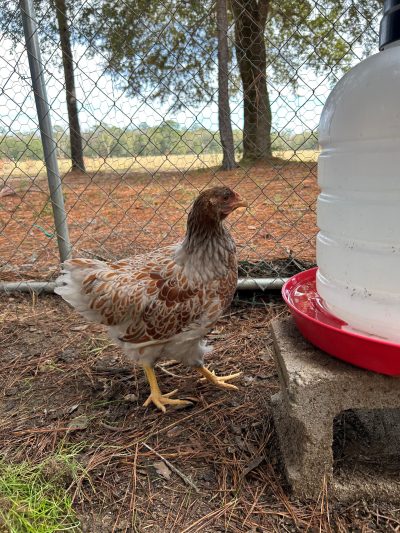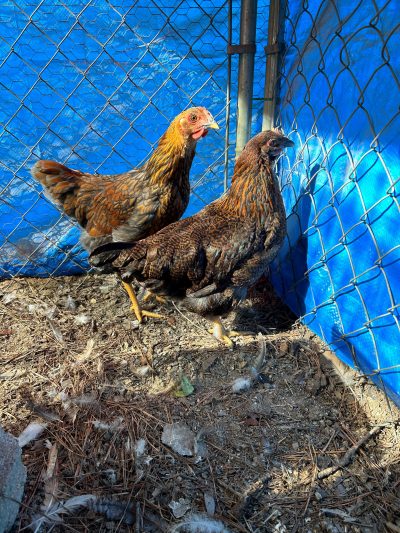While it has been unseasonably hot this fall, it is finally starting to cool off! While most livestock prefer the cooler weather, our feather friends need special considerations during the colder season. Fortunately, with a few easy steps, keeping your chickens healthy and warm during the winter can be accomplished. When preparing your chickens for cold weather, some things to consider are heating, lighting, good air flow in their coop, water and feed.
–
Nutrition
We know how important water is during our hot summer months, but fresh clean water during the winter months is also critical. Fresh clean water must be available 24/7. In Florida we won’t likely see our waterers freezing but we need to keep an eye on them daily.
Chicken’s feed intake will increase during the colder months, because they are burning more calories to stay warm. You can expect to feed your chickens 1.5 times more in the winter months then during the summer months. You want to make sure you provide high protein feed especially during the winter months. Consider feeding a pellet or crumble that is between 12% and 20% crude protein. Also keep in mind that scratch feed contributes very little protein to the chicken’s diet, it is more of a treat!
–
Ventilation
We want to keep our chickens warm, but we need to consider ventilation. Ventilation is important because chickens need fresh air. Poor or limited ventilation can cause buildup of ammonia gas, which is produced by the chicken’s manure. Too much ammonia can be harmful to your chickens. Ventilation will also help control odor in your coop, which also plays a role in keeping your chicken healthy.
–
Heating the Coop
Living in Florida we don’t see a lot of freezing temps, but it can happen. During this time, we need to be aware of frostbite on our chickens comb and wattles. This is an easy fix – cover your chickens combs and wattles with Vaseline or a similar product to prevent frostbite.
- Take the Vaseline and apply a thick layer onto the chicken’s comb and wattle. Just be careful not to get the Vaseline into the chicken’s eye
- Frostbite on a chicken comb or wattle will turn the comb black/blueish coloring
Additionally, taking measures to add warmth to your coop will help protect your chickens from the weather. By putting tarps up around the coop you will provide a wind block and help hold in heat (keep in mind you still need a source of ventilation). Straw or hay is great bedding for winter because they help trap in heat to keep your chickens warm. Using external heat sources can also be helpful but can be a fire hazard. This would include heat lamps but ensure that they are securely mounted and monitor them closely. Mature chickens will only need an external heat source when temperatures are below freezing.
–
Reduced Laying
During the winter months, most hens will experience a decrease in egg laying frequency, while some even pause production. Why? It is not necessarily the cold, but rather the decrease in daylight hours. Optimal egg production occurs with 14 to 16 hours of daylight. In the Florida Panhandle we only have about 10 to 11 hours of daylight through the fall/winter months. You can extend the daylight hours by hanging a lightbulb on a timer in the coop to help promote egg laying. Also keep in mind this should just be to supplement a few hours of light, as too many light hours can have health impacts on your chickens.
–
Overview
Most importantly, monitor your chicken’s behavior. If they are moving about and acting normally, they are fine! They will naturally fluff out their feathers or stand on one foot to keep warm. With just a little bit of prep work, your chickens will be warm, content, happy chickens during the cold winter months. By keeping nutrition, shelter, ventilation and day length in mind, you will ensure a happy and healthy chicken come spring.
- Big Doe Contest Returns for 2025: A Growing Thanksgiving Tradition - November 14, 2025
- UF/IFAS Extension Panhandle Cattlemen’s College Announces Scholarship Opportunity for Florida Youth – Application Deadline September 15 - August 29, 2025
- Foot Rot Prevention and Treatment for Cattle - August 15, 2025


